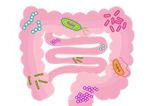Is it time to rethink those sugary drinks?
by Anne Finch, Accredited Practising Dietitian for LiveLighter
- November 6, 2015
- Leave a comment
- Marketing
- Healthy eating
- Top Tips
- Mythbusting
- Sugary drinks
- Goal Setting
- Junk Food
- Sugar
- Drinks
- Nutrition Facts

Imagine you’re snuggled up on the couch, listening to the rain on the roof tiles and watching someone make you a nice hot cup of tea. They add a touch of milk, and a teaspoon of sugar. And then another. And then another. And then seven more spoons of sugar. You probably wouldn’t drink that cup of tea, but that’s how much sugar is in a can of soft drink.
Why does a soft drink taste better than a sickly sweet tea with 10 sugars? Confusingly, it’s because it doesn’t taste as sweet. The bubbles, the flavouring, the acid and the coldness of the drink all mask the sweetness and make it much more refreshing. Have you ever tasted a warm, flat cola? It’s cloyingly sweet and completely unappetising.
It’s easy to forget that we take in energy (measured in kilojoules or calories) through drinks as well as food. Because drinks don’t fill us up in the same way, we’re less conscious of how much we’ve had, and it’s much easier to drink more kilojoules than you need to.
A cheese and salad sandwich has about the same number of kilojoules as a 600 mL soft drink:
| 600 mL cola | 1 cheese and salad sandwich | |
 |
 |
|
| Kilojoules | 1080 kJ | 986 kJ |
| Sugar | 63.6 g (16 tsp) | 4.8 g (1 tsp) |
| Fibre | 0 g | 5 g |
| Protein | 0 g | 13.9 g |
| Calcium | N/A | 282 mg |
That sandwich has loads of positive nutrients like fibre and protein and will fill you up. A soft drink, on the other hand, is a nutritional wasteland full of empty kilojoules that can easily lead to weight gain. This, in a nutshell, is the main issue with sugary drinks.
And it’s not just soft drinks that contribute extra sugar and kilojoules. Sports drinks, energy drinks, iced teas and fruity drinks are also packed with sugar and kilojoules. There are hundreds of different drinks available and they’re massively marketed. In the 2009 the junk drink industry spent almost $150 million persuading Australians to drink their products.
If you’ve ever seen a cola beverage ad, it’s probably not surprising to you that the biggest consumers are the 14 to 18 year old age group (ABS 2014). What used to be an occasional treat has turned into a daily drink. And some of the servings are huge.
To check out how your sugary drinks habit could be affecting your weight, check out our calculator. In case you’re wondering, three cans of soft drink, a fruit drink and an energy drink every week can lead to a five kilogram weight gain over a year. Yowzers!
Sugary drinks are also terrible for your teeth. If you’re as scared as I am of the dentist, that’s pretty good motivation to switch to water.
What should I drink?
Plain ol’ tap water or reduced fat milk are the best options for a drink. If that’s not your thing, try adding a little pizazz by using sparkling water, fruits and herbs to jazz up a jug of water. Doing something small, like buying a refillable water bottle that you like using, or keeping water cold in the fridge, can make the switch easier.
If you’re coming off a serious sugary drinks habit, slowly decreasing the amount of sugar you’re having can be a good trick. For example, watering down your juice or diluting your cordial more and more each day. Your taste buds will get used to the change, and before you know it you’ll be saving money and doing a great thing for your health by skipping them all together.







